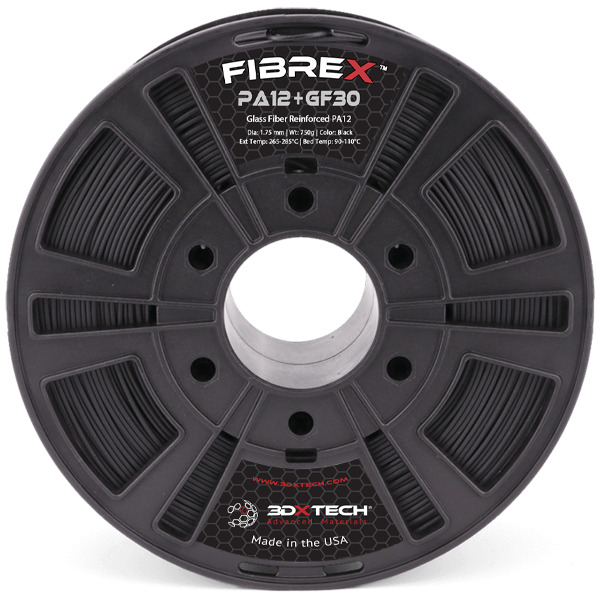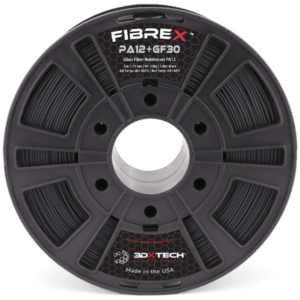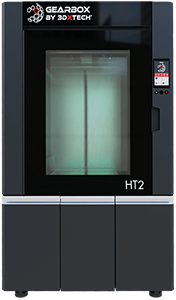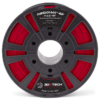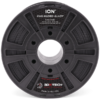FibreX PPA+GF15
$140.00
FibreX™ PPA+GF15 is a high-performance nylon with excellent thermal, mechanical, and chemical resistance properties. Our specialty PPA (polyphthalamide) is a semi-aromatic nylon that is superior to typical aliphatic nylons such as PA6 and PA12 and used extensively in demanding industries such as auto, aerospace, oil & gas, and electronics.
FibreX™ PPA+GF15 3D Printing Filament
FibreX™ PPA+GF15 is a glass fiber reinforced polyphthalamide (PPA) with exceptional thermal, mechanical, and chemical resistance. PPA’s are a special type of high temperature nylon (HTN) – semi-aromatic polyamides – whose molecular structure imparts significantly higher properties than aliphatic polyamides such as PA6, PA66, PA11, and PA12, which are normally used in 3D printing. PPA’s have significantly higher glass transition temperatures (Tg’s), melt temperatures (Tm’s) and heat deflection temperatures (HDT’s) when compared to typical aliphatic nylons such as PA6 or PA12. The chemical structure of PPA reduces the amount of moisture that is absorbed as well as the rate at which it is absorbed – resulting in a stiffer printed part once exposed to environmental or end-use conditions.
Gearbox HT2™ 3D Printer: Print industrial-grade parts using our PPA+GF15 and more with the new Gearbox™ HT2 High-Temp 3D Printer.
Print Recommendations
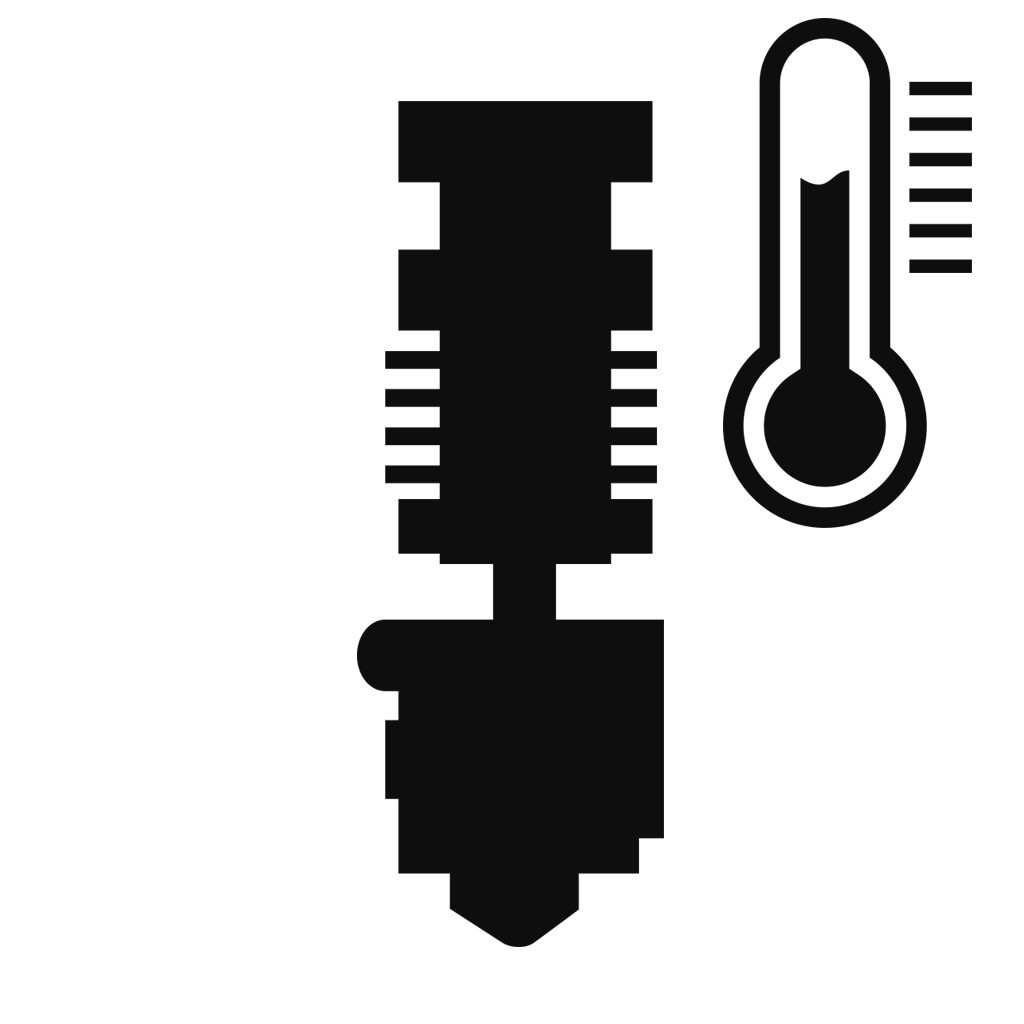
Extruder Temp
325-345°C
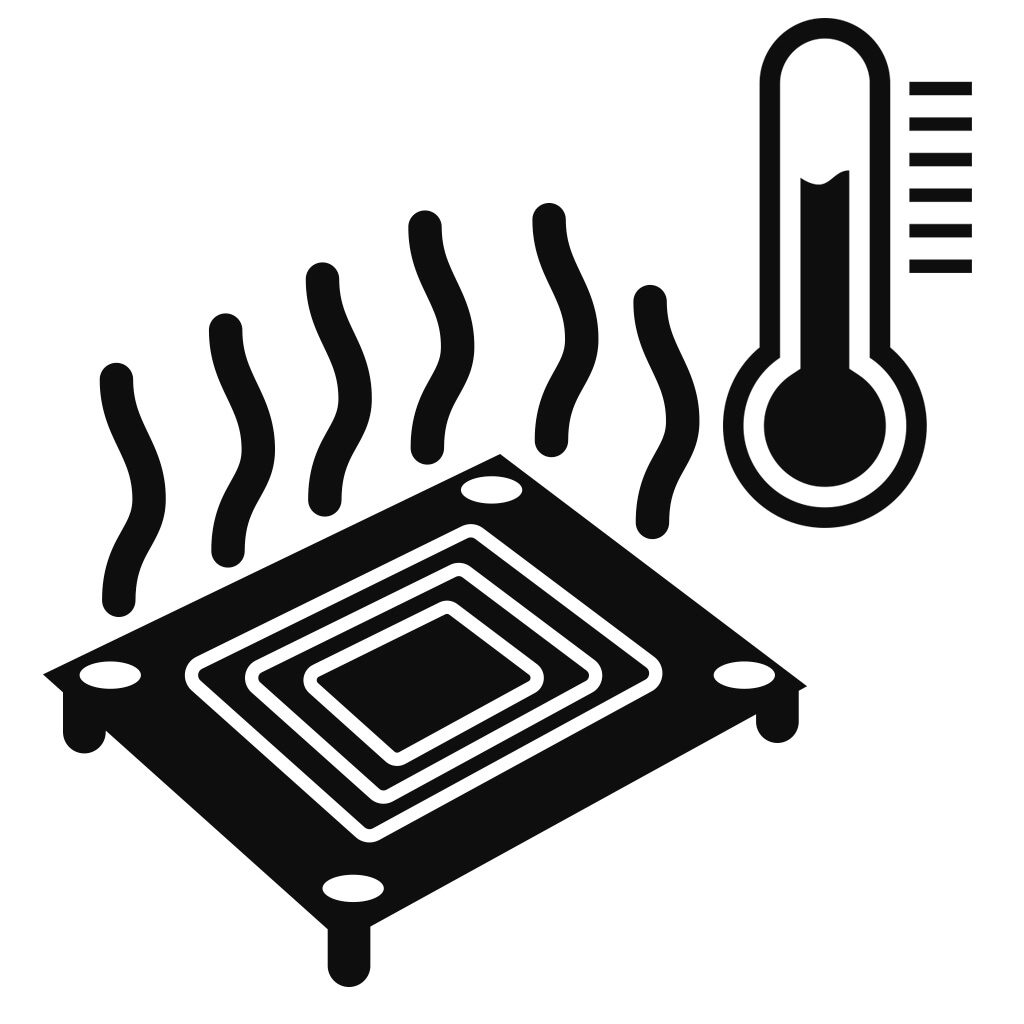
Bed Temp
120-140°C
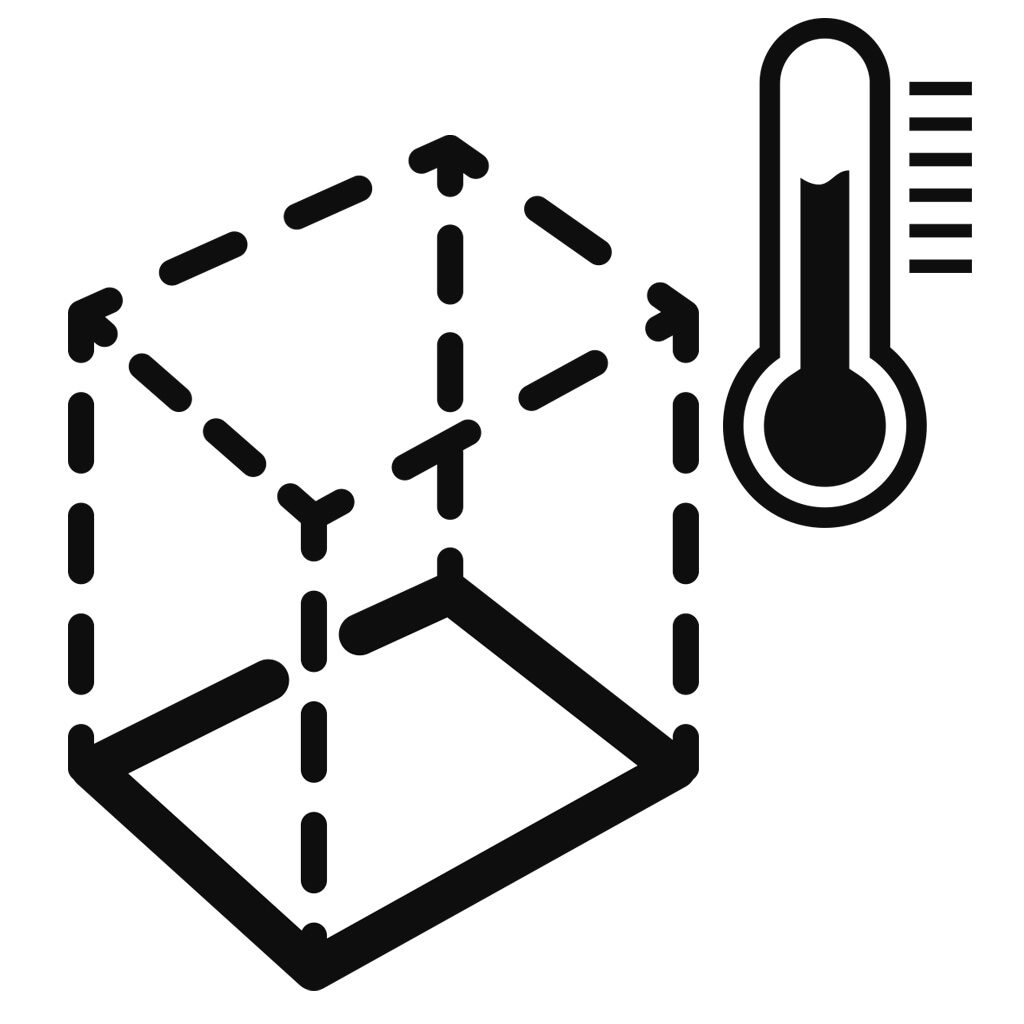
Heated Chamber
up to 140°C

Nozzle Specs
0.4mm diameter minimum
Hardened Steel Nozzle

Bed Adhesion
Magigoo Bed Prep

Layer Height
0.25mm or higher

Drying Specs
120°C for 4 hours
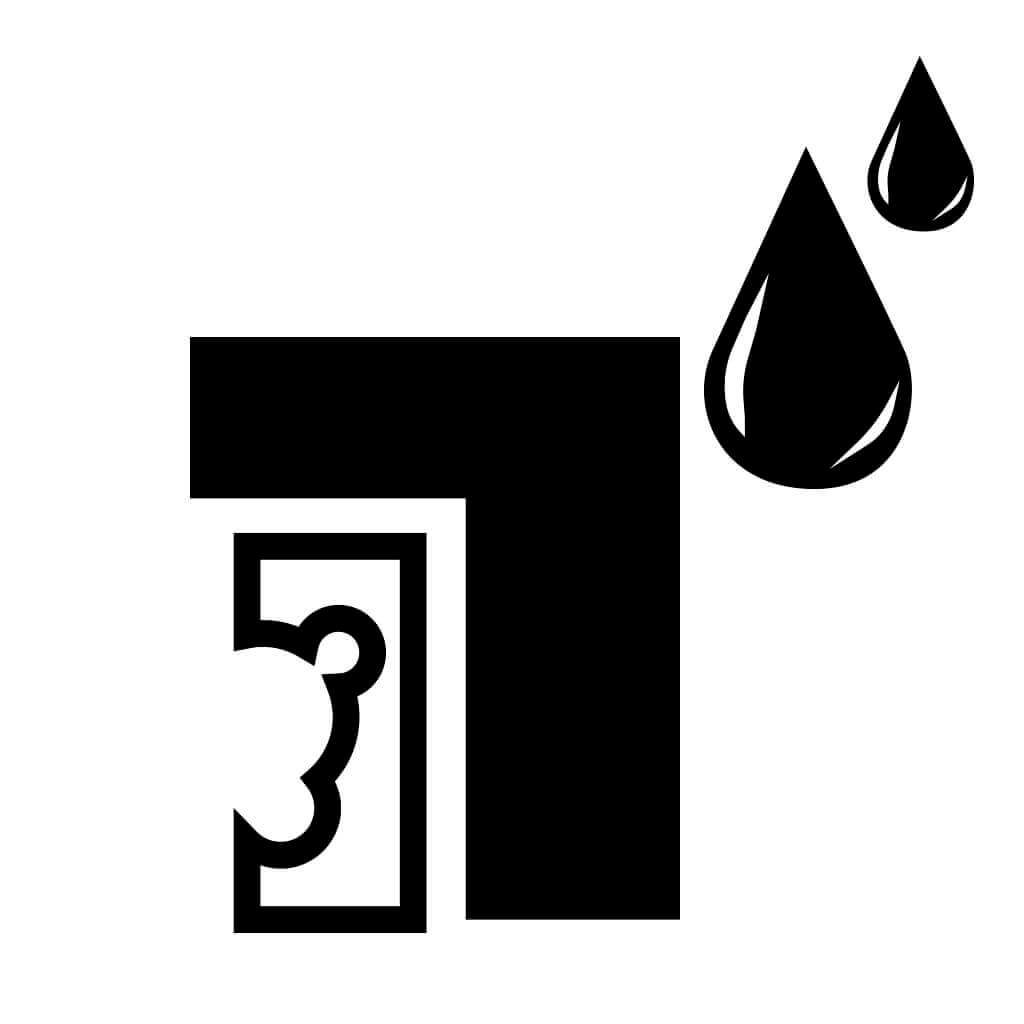
Supports
Water Soluble Supports
Benefits of PPA+GF15 PPA High Temperature Nylon Include:
- High thermal properties, with a Tg of 125°C, HDT of 260°C, and Tm of 305°C
- Excellent strength and stiffness over a wide temperature range, up to 260°C, higher than ULTEM™ PEI
- Very low moisture absorption yielding improved retention of mechanical properties even when exposed to humid environments
- Outstanding chemical resistance to alcohols, acids, automotive and jet fuels, oils, lubricants, brake and transmission fluids, antifreeze, and Zn/Ca Chlorides
Technical Data Sheet
TDS for this material coming soon!
Safety Data Sheet
TDS for this material coming soon!
Filament Specifications:
1.75mm +/- 0.05mm in diameter
Recommended Print Settings:
- Extruder: 325-345°C
- Bed Temp: 120-140°C
- Nozzle: We currently recommend a hardened steel nozzle with a minimum diameter of 0.4mm
- Other: Ideal layer height is 60% of nozzle diameter. We do not recommend printing layers smaller than 0.2mm with carbon fiber reinforced filaments
- Bed Prep: Magigoo Bed Prep and 3DXTECH Polyimide Tape gives us the best results
- Heated Chamber: Recommended
- Supports: AquaTek™ water soluble X1 USM Universal Support Material is designed to work with complex model geometries
- Drying Instructions: 120°C for 4 hours
Glass Fiber Reinforced Filament
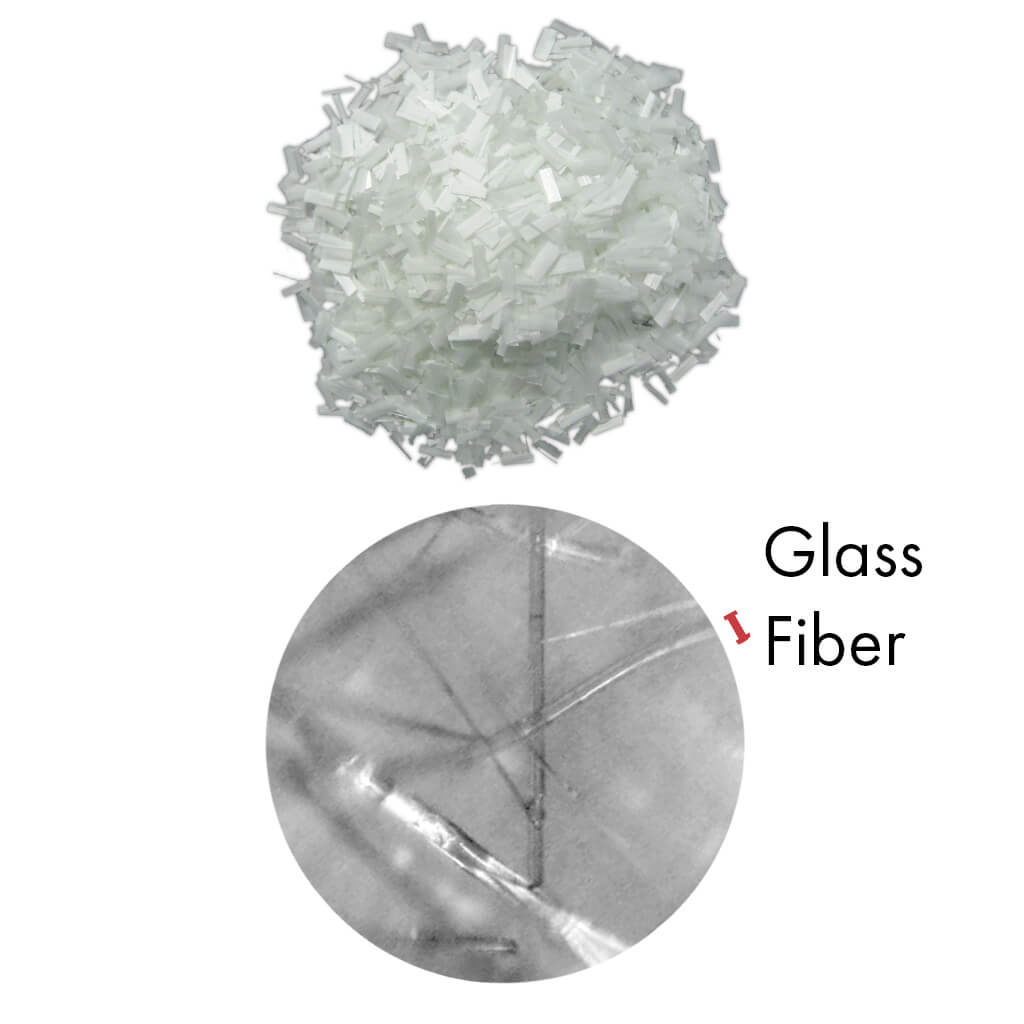
What Is It?
Fibers made of glass reinforced into the polymer during manufacturing and aligned along the axis of filament.
This, along with their physical makeup, give this material enormous strength and mechanical properties.

What Does It Do?
Glass fiber reinforcement gives material a lot of desirable properties:
- High strength
- High stiffness
- High chemical resistance
- Low thermal expansion
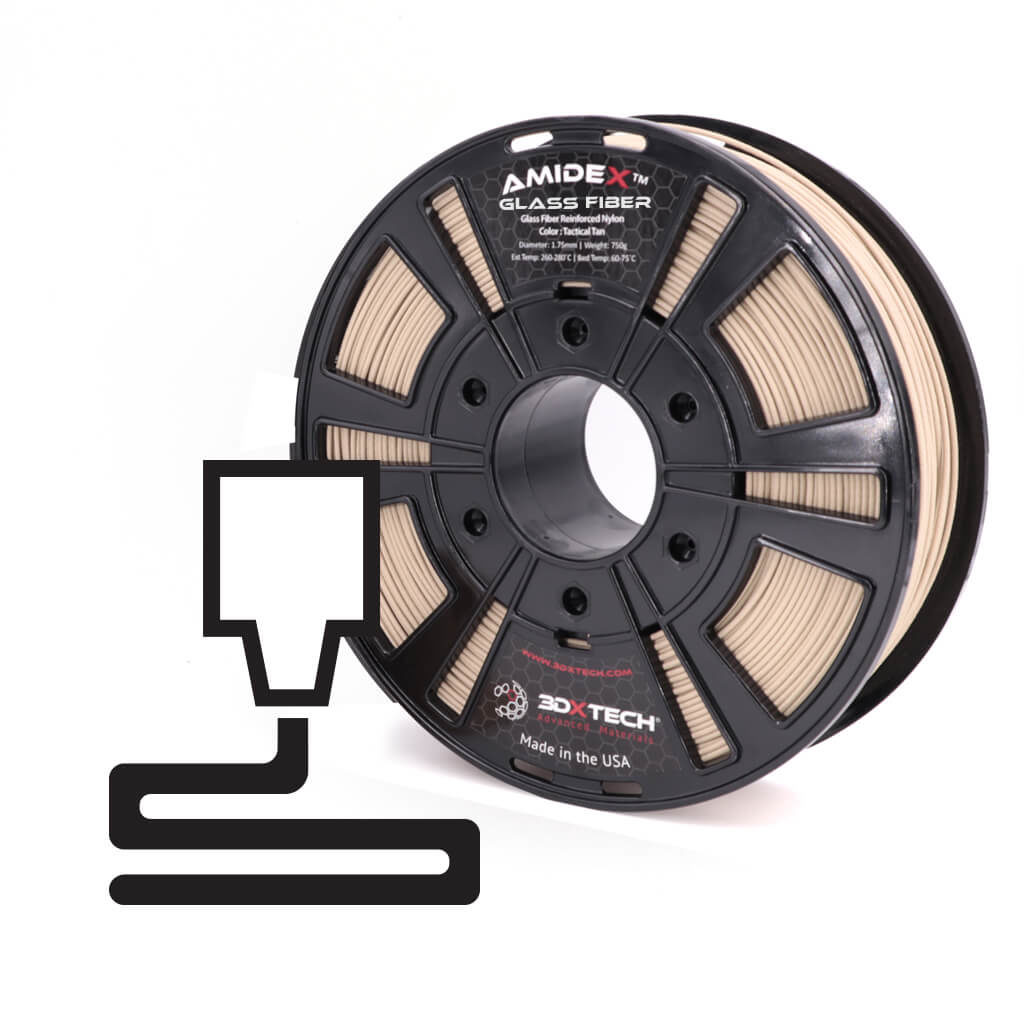
How Does It Work?
Reinforcing plastic with glass fibers produces a 3D printing filament which exhibits the best properties of both fiberglass and the plastic of choice.
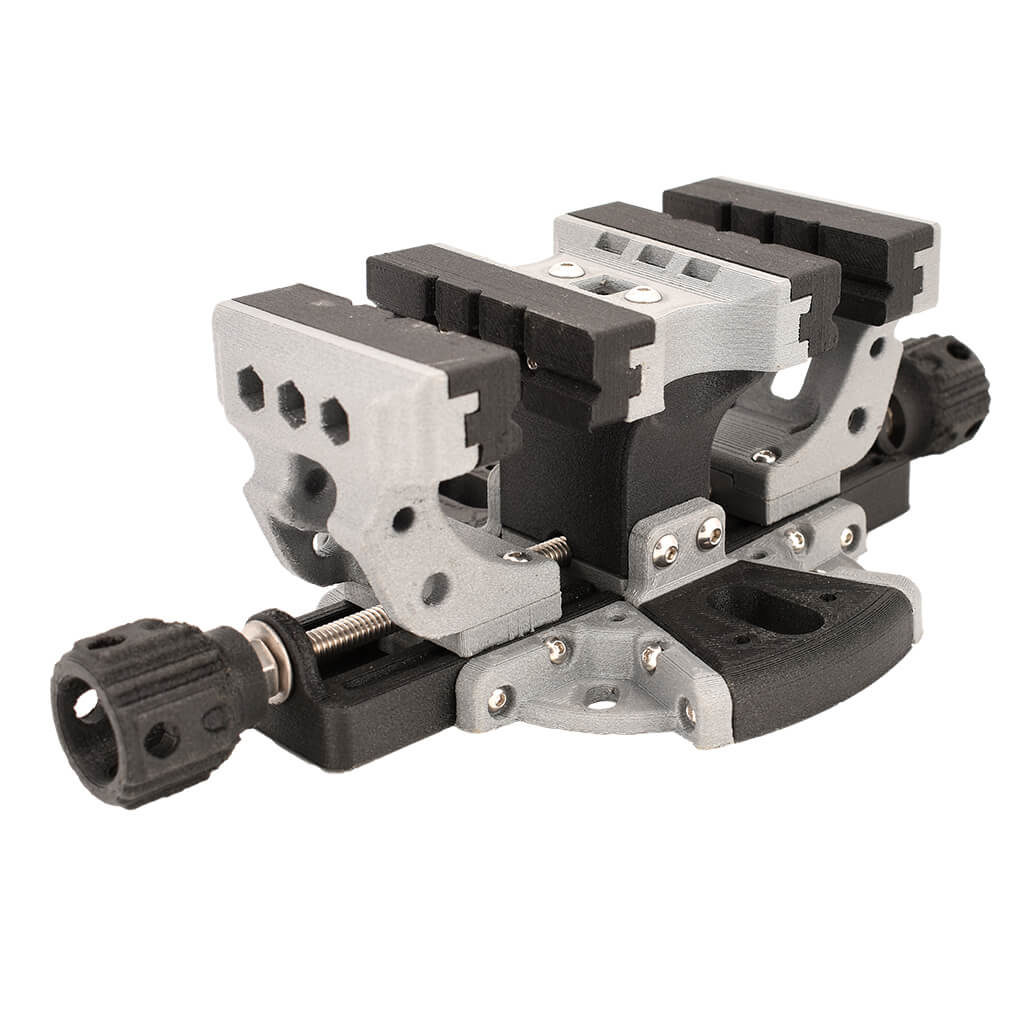
What Is It Good For?
Ideal for any applications which require strength and rigidity.
For these reasons, glass fiber reinforced filament is very popular in automotive, mechanical, civil engineering, and research industries.
Abrasive Material
This material is particularly abrasive among 3D printing filaments. Users may find standard brass nozzles are chewed through very quickly compared to standard wear and tear. When worn through, the nozzle diameter will widen inconsistently and the printer will experience extrusion issues.
Because of this, it's strongly recommended this material be printed through a hardened steel nozzle rather than a softer metal. Hardened steel nozzles can often be inexpensive and easily installed depending on your printer manufacturer's instructions.
Questions?
Send us a message and we'll reach out as soon as we can!

